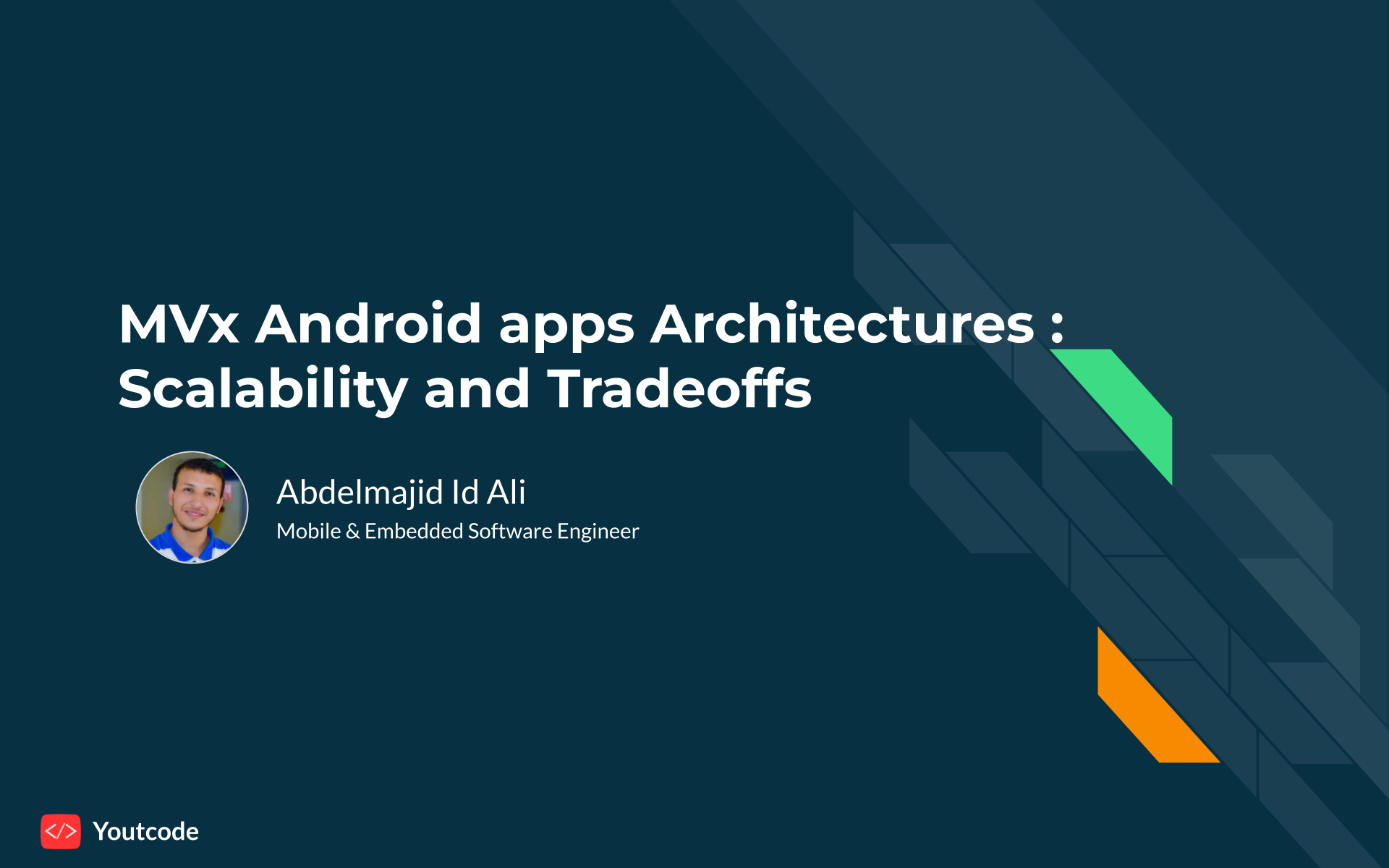MVx Android apps architectures : Scalability and Tradeoffs

Many Android developers face a tough choice;
Which Android app architecture should I use?
As an Android developer, choosing the right architecture is more than just a technical decision. It's about balancing trade-offs. Each architecture has its pros and cons. In this blog, we’ll look at different architectures and compare them.
It's a critical decision, cus of your choice affects:
- Your app's maintainability
- Your app's scalability
- Your team's productivity
- And your project's overall success
Resources are often limited. You need to make the best choice for your team, depend on App size and the team size consider these trade-offs:
MVC (Model-View-Controller)
This is the first arch pattern that come to the mind, as its the first Android architecture based on Activity as the Controller. Its easier to implement. But can lead to tightly coupled code.
MVP (Model-View-Presenter)
Better separation of concerns. But can be more complex to manage. the most popular issue in android with this pattern is that the Presenter must have a reference of the View so that lead to Memory leaks and its hard to manage the life cycle of the view and Context related objects.
MVVM (Model-View-ViewModel)
The recommended pattern by Google, great for data binding. But can add extra layers of abstraction.
MVI (Model-View-Intent)
MVI is widely used in reactive programming frameworks like Jetpack Compose, RxJava, and Kotlin Flow. Its a clear unidirectional data flow, but can be harder to debug.
MVI can require a lot of boilerplate code to manage the flow of intents, state transitions, and view updates, making it more cumbersome than simpler patterns like MVC or MVP in some scenarios.
Clean Architecture
Clean architecture organizes the code into concentric layers, where the inner layers form the core of the application and should be isolated from the outer layers. Dependencies are pointed inwards, ensuring that no inner layer depends on an outer layer. Its a highly testable and scalable architecture. But can be overkill for small projects.
Ultimately, your decision isn't just about today. It's about future-proofing your application. It's your chance to develop a robust, scalable, and maintainable product. Start by clearly understanding your project requirements before writing the code.

